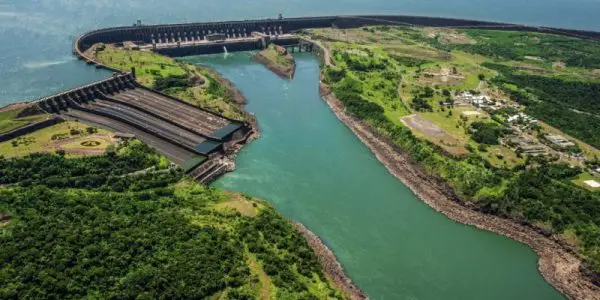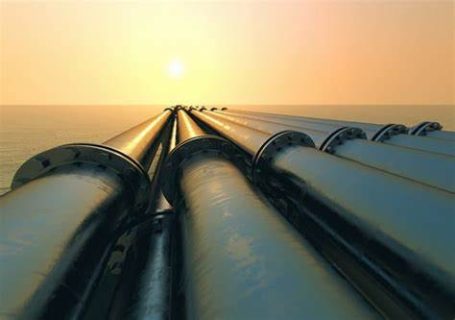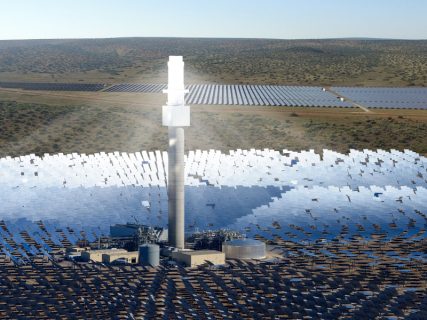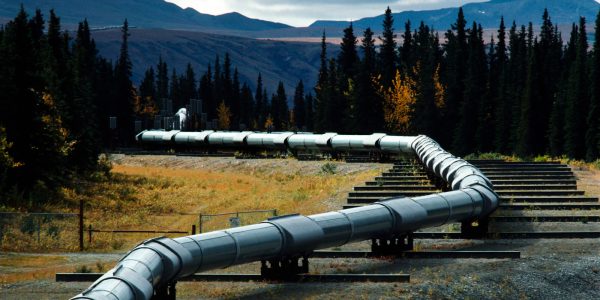1. Mphanda Nkuwa: Major Energy Infrastructure Projects in Mozambique, Southern Africa

In Southern Africa, Mozambique is in dedication to achieving potent energy needs and economic growth in 2024. Hence, by introducing the Mphanda Nkuwa major energy infrastructure project which is heavily ambitious. This enormous project, which has been under study by experts since 1998, involves the building of a monstrous 1,500MW dam on the mighty Zambezi River. It is to be built strategically downstream only by 60 km from the existing Cahora Bassa dam. This project has a cost of $5 billion meaning it will be a very big investment in the country’s energy infrastructure. Moreover, a significant platform towards the utilization of the huge potential of hydropower in Mozambique.
The project got great support in 2023 in agreement with three of the major international energy companies. EDF (40%), TotalEnergies (30%), and Sumitomo Corporation (30%). Consequently, made the realization of this project possible. Besides bringing together the massive funding and technical capacity which the project demands, the strategic partnership emphasizes the growing international attention on the Mozambican energy sector as a potential energy security and development factor in the region.
It is in anticipation by the time the Mphanda Nkuwa dam is complete, it will have a significant increase on Mozambique’s electricity generation capacity. This is with the possibility to completely remodel the country into an energy exportation hub. Nonetheless, clean renewable energy powerhouse for the region. The program will create jobs and allow the local industries to grow, and will also extend its reach to regions currently without electricity.
2. Mauritania-Mali Transmission Line: Boosting Regional Energy Trade
West Africa has taken a decisive step towards improving regional energy collaboration and integration. This is by embarking on a major energy infrastructure project that can promote cross-border interdependence and stability. This is a major endeavor which is worth $900 million. Through the implementation of this project, the construction of a gigantic 1,373 km-long high-voltage power transmission line were done. It will link the electricity grids of Mauritania to Mali. This burly infrastructure of a capacity of 600 MW not only would serve as a conduit for smooth flow of electricity between the nations but also contribute to the broader objective of regionalization of electricity trade and natural resource allocation in the whole region.
The project will hook up a total of 100,000 homes to the line. Thereby, enhancing access to reliable and affordable electricity for thousands of families that are able to make ends meet in both countries. This initiative is an integral part of a more encompassing regional approach. Thus, outlines sunshine conversion to be a core function in Sahel with so far untapped solar energy. The endeavor is to develop a power strip that in the long run will link Mauritania to Chad, passing through Burkina Faso, Niger and Mali, therefore fostering regional power cooperation, safe energy delivery and economic growth in West Africa.
3. Nigeria-Morocco Gas Pipeline: Major Energy Infrastructure Projects Connecting West Africa to Europe
The Nigerian National Petroleum Company (NNPC) and the Moroccan Office National des Hydrocarbures et des Mines (ONHYM) are spearheading a huge regional integration, energy security and economic development initiative across West Africa by establishing a cross-continental gas pipeline. Launched in 2016, this major energy infrastructure project is designed to build a 5,600 km pipeline. This will transport natural gas from Nigeria’s hugely endowed Niger Delta directly to Morocco and then to Europe.
The strategic pipeline is a great game changer for the regional energy framework. Set to cost a staggering $25 billion, but with the ability to pump out a massive 10 billion cubic meters of gas per year. This project is a demonstration of the region’s potential energy resources. Furthermore, it is also the indicates the increasing demand for reliable and affordable energy across Africa and around the world.

The linking of energy infrastructure of the various nations through this pipeline will create more coordination. Consequently, it will increase energy security and lead to the efficient distribution of natural gas resources throughout the continent. Firstly, it has great capabilities for pulling in a huge foreign investment, job creation, and strong economic growth which boosts its position on the global map of energy.
4. Lake Albert Refinery: Uganda’s Domestic Oil Processing Ambition
Uganda is set to take a key investment decision in 2024 concerning $4 billion Lake Albert refinery project in Hoima district. A pursuit of its ambitious goal of growing and utilizing Uganda’s abundant oil and gas sector. They plan to process 60,000 barrels of crude oil per day from this world-class refinery. Therefore, enabling the country to capitalize on the domestic reserves locked up in the western region. Uganda will finally take its rightful place as one of the major players in the regional energy market.
The refinery is complemented by the East African Crude Oil Pipeline (EACOP). A major energy infrastructure project that should serve as an avenue for crude oil exportation from Uganda to Tanzania. Eventually, linking the country with the region. When time-framed, Lake Albert refinery will produce petroleum products such as petrol, diesel, kerosene, jet fuel and liquefied petroleum gas that not only caters for national demand but also service regional markets.
Pay attention to the fact that this refinery will be the only existing one in East Africa in the sense of how committed Uganda is to reduce the amount of oil imports and increase its energy security. The project will open up employment opportunities for lots of people and can develop local sectors as well, thus contributing to the overall economic development of the country and the region.
5. Namibia’s Green Hydrogen Project: Renewable Energy Leadership
Namibia will be embarking on a major energy infrastructure project worth $9.4 billion. They aim to produce green hydrogen from renewables like solar and wind. The project will cover 4,000 squared kilometers of area. It is located in the large and sunny Tsau Khaeb National Park close to the coastal town of Luderitz. It also has an impressive capacity of green hydrogen production of 300,000 tons per year.
This project is a notable milestone in Namibia’s broader objective. That being a solar hydrogen superpower and an example for the global energy transformation by greener and more environmentally friendly energy sources. Namibia plans to join the production and export of the green hydrogen. This is through the major exploitation of its impressive renewable energy resources. Specifically solar and wind potential, which power not only the transportation, industry and power generation but also the global decarbonization.
In addition to the economic and energy aspects of the project, this project will emphasize Namibia’s commitment to the environment and active participation in the strategy of fighting against the mitigation of the climate change impact. This can be done by use of green hydrogen coming from renewable sources. This also helps in reducing the carbon footprint and global efforts to combat climate change, thus promoting a sustainable future for generations to come.
6. Redstone CSP: South Africa’s Concentrated Solar Power Major Energy Infrastructure Projects
As a part of its efforts for transformation, the country is making substantial progress in CSP technology. It aims at maximizing use of renewable and diverse sources of energy. The 100MW Redstone CSP plant in Humansrus solar park will be a firebrand in this field. It may finally get commission in 2024 after years of concerning its development.

This venture is a central part of the South African Renewable Energy Independent Power Producer Procurement Program (REIPPPP). It was developed to speed up the process of the renewable energy deployment and the reduction of the country from fossil fuels. The Redstone plant will utilize the state-of-the-art ThermaVault technique. This technique comprises solar thermal technology into molten salt energy storage. Thus, providing it with the capacity to supply uninterrupted and dispatchable power even after sunset.
The cutting-edge application of South Africa not only expands its renewable energy portfolio but helps to deal with the intermittency issue of the traditional solar photovoltaic systems. The capacity to store thermal energy and the option to produce electricity at the required time improves the stability and resiliency of the national grid, which is a valuable contribution to a cleaner and stronger energy future in the country.
7. East African Crude Oil Pipeline (EACOP) Controversies and Regional Significance
The shifts towards clean fuels are taking place, but fossil fuels remain the most important energy sources around the world. In this regard, the 1,443 Km long East African Crude Oil Pipeline (EACOP) is now a beacon issue for all. This is due to the possibilities it opens, and the controversies associated with environment and social implications.
In 2013, this major energy infrastructure project was in proposal. It is the ambitious project by which crude oil from the Lake Albert oil fields in Uganda would be transported. Transportation will take place at the port of Tanga, neighboring Tanzania for the export of Uganda’s oil reserves to global markets. The EACOP is in estimation to cost $5 billion and has a capacity of 216,000 barrels per day which is a significant regional investment in the energy infrastructure and a significant step towards energy independence.
On the other hand, the project has a strong opposition from environmental activists and local communities due to negative impacts, including, impacts on ecosystems, water resources, and livelihoods of peoples living along the pipeline route. Even with these controversies, the Ugandan and the Tanzanian governments have highlighted the project’s regional role for energy security and economic development, revealing the compromise between the exploitation of natural resources and mitigation of environmental and social concerns.

8. Julius Nyerere Hydropower Project: Tanzania’s Power Generation Ambitions
Tanzania is a well-endowed country with natural resources. It is all set to put to good use to its hydropower potential after the commissioning of the colossal Julius Nyerere HPP in 2024. The gigantic project with the capacity of 2115 MW will be the source of pride for the country as it is destined to become one of the largest hydroelectric power stations in Africa. This project will be the testimony of Tanzania’s aspiration to increase power generation capacity both at home and abroad.
This collaboration in the energy infrastructure is one of the Tanzanian important strategies. Hence, to strengthen energy sector and propel economic growth across different industrial sectors. The Julius Nyerere power plant is offering cheap and environmentally friendly power sources. It will as well augment the development of industries, irrigations systems and other critical infrastructures within the country.
Additionally, the project’s surplus generation capacity gives space to expanding electricity access to poor communities and also opens up to trade of electricity. Tanzania leading the game in East African energy market. The country balances its need to meet increasing energy demands with preservation of its natural endowment. This major energy infrastructure project has become a testimony of Tanzania’ commitment towards sustainable development and energy independence.
9. Richards Bay LNG Terminal: South Africa’s Decarbonization Efforts on Major Energy Infrastructure Projects
South Africa has started a big project aimed at constructing an LNG (liquefied natural gas) import terminal. Taking place in the strategic city port of Richards Bay which is located in the KwaZulu-Natal province. This multimillion-dollar facility is a major milestone in South Africa’s energy transition process towards cleaner fuels. It has an initial annual capacity of 1 million metric tons of LNG, which can be expanded to 5 million metric tons by 2036.
The LNG terminal in Richards Bay is the main aspect of South Africa’s energy plan. Hence, is intended to decrease the country’s reliance on coal-fired power plants and decrease its emissions of greenhouse gases. South Africa will import LNG, which is a cleaner burning fossil fuel, in order to broaden its energy mix. Furthermore, to offer industries and power generation a cleaner alternative to coal.
This major energy infrastructure project reflects the country’s commitment to combat climate change. It further promotes sustainable development but also offers the opportunity to improve South Africa’s energy security and dependability. Through the establishment of a robust network for LNG import and distribution, South Africa can have a stable supply of energy resources that makes it less prone to disruptions in domestic production or shortages/fluctuations in global markets.
10. Noor Midelt Solar Complex: Morocco’s Hybrid Solar Power Prowess
Morocco is the leader in African renewable energy sector. It is now solidifying its place on the map by building the Noor Midelt solar complex. This is the first hybrid power plant that embraces the benefits of the concentrated solar power (CSP) and photovoltaic (PV) plants. The Midelt province hosts this megaproject that will come at a massive cost of $2.4 billion. The facility will also have an impressive 800MW capacity, making it one of the largest solar facilities in Africa.
Through the deployment of both CSP and PV technologies, Morocco plans to fully exploit its vast solar resources. Moreover. it aims to provide a stable and uninterrupted source of clean energy. Like CSP, which uses mirrors to focus sunlight and drive turbines whereby the stored heat can be converted to electricity even after the sun has set. On the other hand, the PV component transforms sunlight into electricity, taking full advantage of the highest possible energy production during sunny daylight hours.
It is an innovative hybrid way that not only improves overall plant efficiency and reliability but also it positions Morocco, that is globally, as a leading country in cutting edge solar technologies. This attracts international investment and knowledge transfer in the renewable energy sector. Morocco, with its widely acclaimed renewable energy target and sustainable development strategy, is showing other African countries a way to follow as the continent can achieve to develop green and sustainable future by utilizing its natural resources in a productive manner.
Conclusion
As the 2024 year commences, the energy scene in Africa is set for a restructuring towards better prospects. These bold major energy infrastructure projects will be the game changers. From the colossal Mphanda Nkuwa hydropower dam in Mozambique to the trailblazing Noor Midelt solar complex in Morocco. Such initiatives illustrate Africa’s persistence to utilize its immense natural resources, close the infrastructural gaps, and promote sustainable economic growth.
They have the potential of integrating the regions in power systems and gas infrastructures. Therefore, will increase energy security and create new trade and cooperation routes for African countries. Furthermore, they stand for a determined switch to a more mixed and sustainable mixture. This including hydroelectric, solar, and green hydrogen, as well as clean fossil fuel substitutes such as natural gas.
These projects once implemented shall bring lots of job opportunities. It will also develop local industries and make energy affordable and reliable. Finally, these top 10 energy infrastructure projects not only signify Africa’s determination in surpassing its infrastructure problems but also, they pave a way to a bright and prosperous future.
